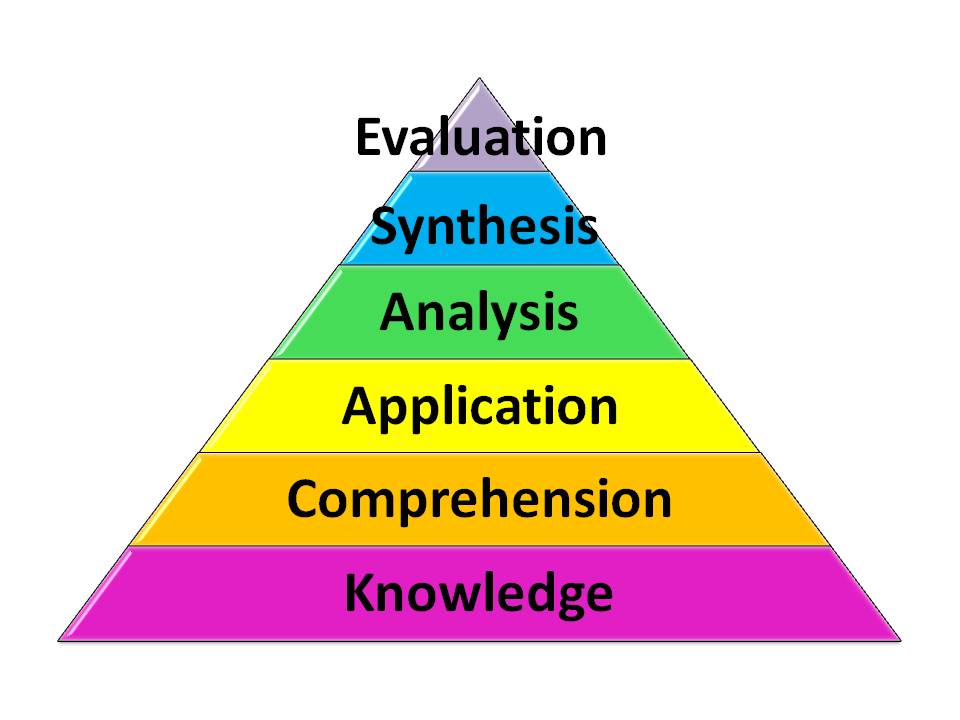Learning objectives can also be referred to as behavioral, instructional, or performance objectives, but in any case, a learning objective refers to an observable behavior or performance as the outcome of learning.
Learning objectives contain 3 components:
1. Condition - specify the circumstance, command, material, or direction given to initiate intended behavior
2. Behavior - Action desired (always a verb!)
3. Criterion - declarative statement to describe how well the behavior must be performed to satisy intent
Bloom's Taxonomoy (as seen below) is used to classify instructional activities based on their level of difficulty and is a great reference tool for writing learning objectives.
Here are some commonly used verbs for each of the six levels, listed in increasing order of the level of thinking skills required:
Knowledge- Define, Memorize, Repeat, Record, Label, Specify
Comprehension- Summarize, Describe, Explain, Identify, Translate
Application- Solve, Simulate, Apply, Illustrate, Exhibit
Analysis- Interpret, Compare, Categorize, Investigate, Discover
Synthesis- Plan, Imagine, Produce, Design, Predict
Evaluation- Judge, Assess, Measure, Conclude, Criticize
Resources:
NERC(2007) Guide to writing Learning Objectives. Retrieved from: http://www.nerc.com/files/Instructional_guide_writing_Objectives.pdf
Photo: http://www.odu.edu/educ/roverbau/Bloom/blooms_taxonomy.htm
